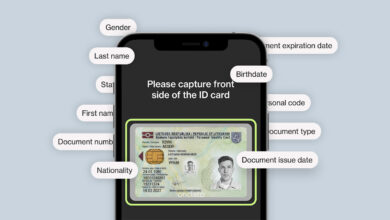Files Over Miles: The Evolution of File Sharing in the Digital Age

Introduction
In the no longer-so-distant past, sharing documents over lengthy distances became a cumbersome and time-consuming system. The emergence of the digital age has converted this landscape, making an allowance for quick and green transfer of documents throughout the globe. This evolution has no longer revolutionized how individuals percentage information most effectively but has also performed a pivotal function in shaping industries, conversation, and collaboration.
The Early Days: Snail Mail and Fax Machines
Before the virtual revolution, sharing files over miles frequently involved physical transportation. Snail mail was the go-to method, relying on postal offerings to deliver documents, pix, or tangible files. This method is no longer the most effective; however, it is also prone to diverse risks, which include loss, harm, or robbery at some transit point.
The introduction of fax machines marked a full-size soar forward. Sending a document through fax removed the need for physical transportation, but it nonetheless had barriers. The great of the transmission became frequently compromised, and massive documents have been impractical because of sluggish transmission speeds. While those techniques served their cause in their time, they were far from green in comparison to the talents we have these days.
Rise of Email Attachments
The advent of electronic mail brought approximately a paradigm shift in record sharing. Email attachments became a famous way of sending documents across distances, removing the need for physical transportation or faxing. This technique extensively reduced the time required for report trade, permitting users to proportion documents, pics, and extras with only some clicks.
However, email attachments had their own set of obstacles. Large documents regularly exceeded attachment length limits imposed with the aid of email companies. This caused the fragmentation of files or using external offerings to host and share larger attachments. Moreover, email attachments were not always secure, elevating issues about the privacy and confidentiality of shared records.
Peer-to-Peer File Sharing
As net connectivity progressed and broadband became more enormous, peer-to-peer (P2P) report sharing emerged as a sport-changer. Platforms like Napster and BitTorrent revolutionized how people shared documents by allowing users to connect at once with each other, permitting quicker and more efficient transfers.
P2P networks allowed customers to percentage files without counting on a centralized server. Instead, documents have been distributed among a couple of users, decentralizing and optimizing the method to single points of failure. This no longer only extended the speed of record transfers but also more robust reliability.
While P2P document sharing became immensely popular, it also faced felony-demanding situations, especially in copyrighted material. The music industry, in particular, noticed a massive effect as customers shared and downloaded copyrighted songs without proper authorization. This caused prison battles and the eventual shutdown of some P2P offerings.
Cloud Storage and Online Collaboration
The evolution of report sharing continued with the advent of cloud garages and online collaboration systems. Services like Dropbox, Google Drive, and Microsoft OneDrive allowed users to save, proportion, and collaborate on files in a virtual environment.
Cloud storage addressed the constraints of email attachments and conventional document-sharing techniques. Users may want to upload extensive documents to the cloud and share them with others by supplying a hyperlink. This no longer most effectively facilitated efficient sharing but also enabled real-time collaboration on files, spreadsheets, and shows.
Collaborative systems like Google Workspace and Microsoft 365 took online collaboration to the subsequent stage. Multiple customers should concurrently paint on the same record, with changes pondered in actual time. This fostered a new generation of far-off paintings and global collaboration, as groups should seamlessly contribute to tasks from different sector components.
Security Concerns and Encryption
As file sharing has become extra typical, so have issues about the security and privacy of shared statistics. Encryption technology played a crucial role in addressing those concerns. File encryption ensures that the most effectively authorized parties can access a record’s contents, adding a layer of protection throughout transmission and storage.
End-to-end encryption became a standard characteristic in many communique and document-sharing platforms. This ensured that even service companies could not get the right of entry to the content of shared documents, enhancing customers’ privacy. As organizations and people became more privy to securing sensitive statistics, encryption became a non-negotiable component of cutting-edge record sharing.
Mobile File Sharing
The proliferation of smartphones further accelerated the evolution of record sharing. Mobile devices became powerful equipment for sharing documents on the cross, and numerous apps emerged to facilitate seamless transfers. Bluetooth, NFC (Near Field Communication), and Wi-Fi Direct allowed users to proportion files directly between devices with minimum setup.
File-sharing apps like SHAREit, Xender, and AirDrop made it easy for customers to change files, pictures, and motion pictures with nearby devices. These apps leveraged the abilities of mobile devices, presenting a person-friendly and efficient way to share content without the need for cables or extra hardware.
The Future: Blockchain and Decentralized File Storage
Looking ahead, the future of record sharing may be formed using emerging technology, including chain and decentralized record storage. Blockchain, acknowledged for its steady and transparent nature, may be hired to beautify the security and integrity of shared files. Smart contracts on blockchain platforms can automate and enforce guidelines related to documents getting admission to, sharing, and ownership.
Decentralized file storage systems using blockchain and dispensed ledger generation to eliminate reliance on significant servers. This could bring about a more resilient and censorship-resistant document-sharing infrastructure. Projects like InterPlanetary File System (IPFS) and Filecoin are pioneering efforts in this direction, creating a decentralized and incentivized community for storing and sharing documents.
Conclusion
The journey from snail mail to blockchain-based report sharing has been incredible. The evolution of report sharing over miles has not effectively changed how we alternate statistics but has also played a pivotal role in shaping our interconnected global.
While each generation added challenges and possibilities, the overarching trend has been considered one of growing velocity, performance, and accessibility. From the constraints of physical transportation to the instant sharing abilities of cloud storage and blockchain, the documents over miles story displays the relentless development of technology.



